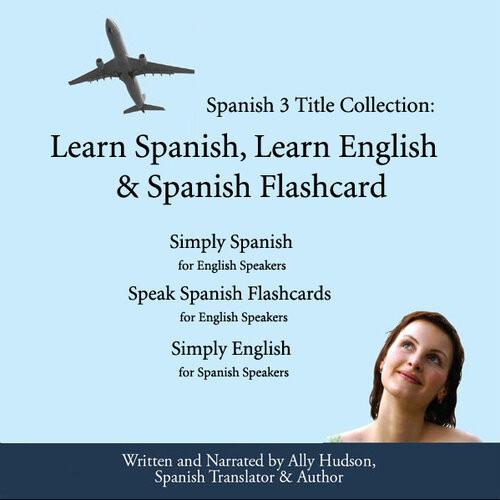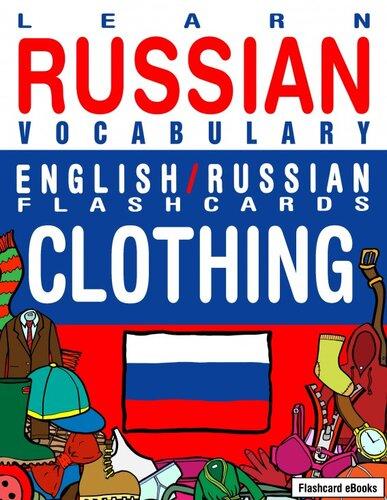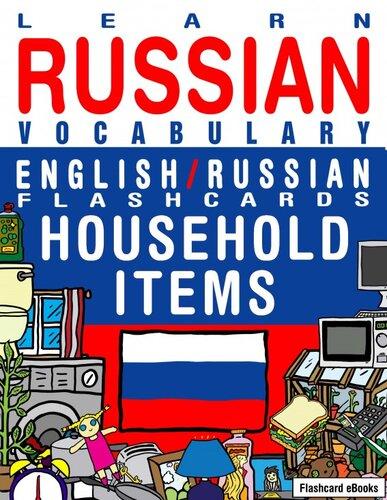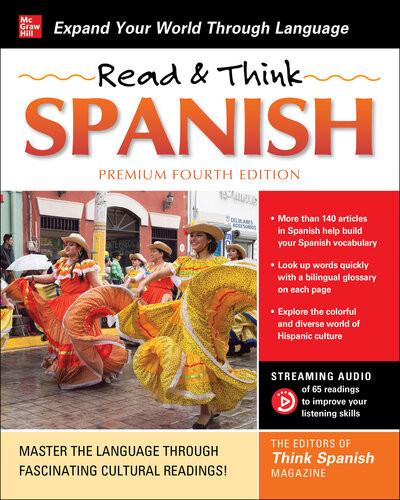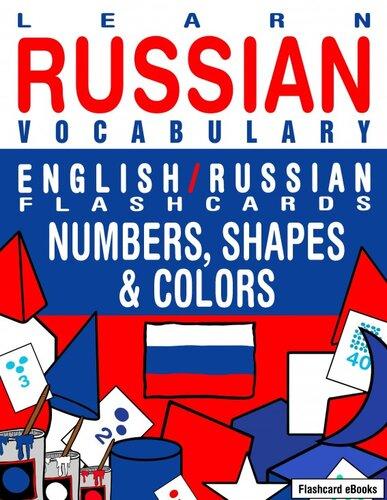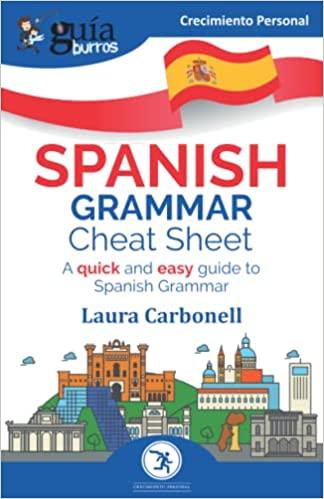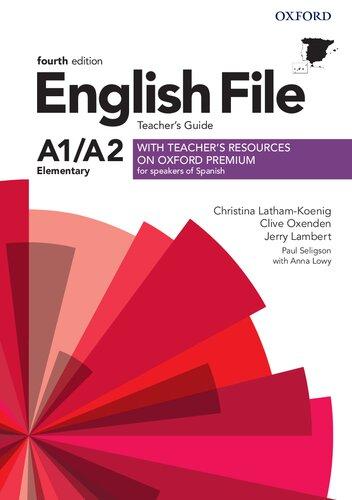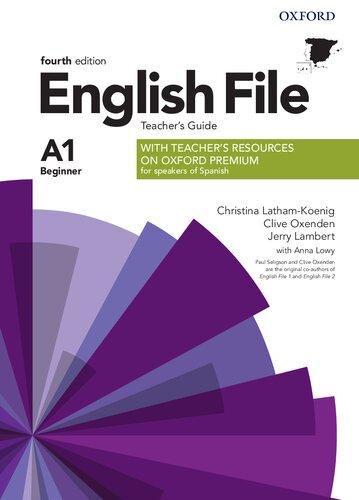Chapter 4: The Alphabet
There are four parts of almost any alphabet: 1) vowels, 2) consonants,3) the English equivalent, and 4) the notation in the pronunciation key.
A a Long ‘a’ as in car (a), (ah).
B be Similar to the English letter ‘b’ but softer; don’t close your lips completely (b).
C ce Is pronounced as a ‘hard c’ – similar to the English sound ‘ka’ before a, o, and u, but it is pronounced as a ‘soft c’ – similar to the English sound ‘se’ before e, and i.
CH che OneofthefourdifferentalphabetlettersfromEnglish: as in church (ch).
D de Softer than the English ‘d’, as with the English ‘b.’ Similar to ‘th’ in then. (d), (th).
E e Similar to the ‘a’ in take but quicker.
F efe Similar to the English ‘f’ (f).
G ge Is pronounced as a ‘hard g’ – similar to the ‘g’ in the English word girl - before a, o, u. But before the vowels e, and i, it sounds like h in the English word help, but stronger (g), (h).
H hache Always a silent sound.
I i Similar to ‘ee’ in meet but quicker (ee).
J jota Similar to the ‘h’ in help but quicker (let out more air to make the sound louder) (h).
K ka Similar to the English ‘k’ (k).
L ele Similar to the English ‘l’ (l).
LL elle OneofthefourdifferentalphabetlettersfromEnglish:it is similar to the ‘y’ in yet and in some instances like the ‘j’ in jet (y).
M eme Similar to the English ‘m’ (m)
N ene Similar to the English ‘n’ (n).
ñ eñe One of the four differentalphabet letters from English: a similar sound as in the word union, ‘nyuh’ (ny).
O o Similar to the English ‘o’ but quicker (o), (oh).
P pe Similar to the English ‘p’ but crisper (p).
Q cu Similar to the English ‘k’. Always followed by a ‘u’ (k).
R ere Similar to the English ‘r,’ a soft rolling rrr sound (r), (rr).
RR erre OneofthefourdifferentalphabetlettersfromEnglish; a harder rolling ‘r’ sound (rr).
S ese Similar to the English ‘s’ (s).
T te Similar to the English ‘t’ (t).
U u Similar to the ‘oo’ in coon, loon, or moon. Crisper (oo).
V ve Similar to the English ‘b’ but softer; pronounced the same as the letter ‘b’ is in Spanish (see above) (b).
W doble ve Similar to English ‘w’ (w).
X equis Similar to the English ‘x’ just as in ax (ks), (h).
Y i griega Similar to the English ‘y’ as in yes (y).
Z zeta Similar to the English ‘s’ (s).
There are two alphabet combinations worthy of note: -ai and -ay which are pronounced like the English word eye.
In summary, you can cut your alphabet learning down to size by noting how many letters are pronounced similarly to their English equivalents. You should focus on these letters; then add-on the more complicated ones. Don’t worry about the exceptions; you have enough to be concerned about. The best way to learn is to begin by familiarizing yourself with the alphabet, and then move on to the other basics. Have fun getting this project under your belt – before you know it, you will be a Spanish alphabet pro!
Chapter 5: Basic Pronunciation
There are three simple rules to pronouncing Spanish words correctly. Repeat and memorize them for simple help with accents. You will notice that this is a much easier approach than in English, French, or many other foreign languages.
Rule #1 - When a word ends in a vowel, an ‘n,’ or an ‘s’, stress the next to last syllable. This can also be referred to as stressing the penultimate syllable.
Rule #2 - If a word ends in a consonant otherthan‘n’ or ‘s’, stress the lastsyllable.
Rule #3 - Any exception to these two rules has a written accent symbol over the stressed vowel.
Chapter 6: Numbers
The letters in bold indicate the syllable to be emphasized in this section, and all other sections, on this title. To help you get used to
seeing them and using them as clues, we have included the traditional Spanish accent marks as well. Nonetheless, don’t get too wrapped up in the accent marks just yet. Instead, let the bold syllables be your guide for pronunciation. We want you to stick to the basics in this introductory title. So stay focused!
Numbers 1-10:
0 = cero (sehro)
1 = uno (oono)
2 = dos (dohs)
3 = tres (trehs)
4 = cuatro (kwahtro)
5 = cinco (seenko)
6 = seis (ses)
7 = siete (syehteh)
8 = ocho (ocho)
9 = nueve (nwehveh)
10 = diez (dyehs)
Numbers 11-20:
11 = once (ohnse)
12 = doce (dohse)
13 = trece (trehse)
14 = catorce (kahtorse)
15 = quince (keense)
16 = dieciséis (dyehseesehys)
17 = diecisiete (dyehseesyehte)
18 = dieciocho (dyehseesocho)
19 = diecinueve (dyehseenwehve)
20 = veinte (behynte)
Numbers 21-30:
21 = veintiuno (behynteeoono)
22 = veintidós (behyntidohs)
23 = veintitrés (behyntitrehs)
24 = veinticuatro (behyntikwahtro)
25 = veinticinco (behyntiseenko)
26 = veintiséis (behyntises)
27 = veintisiete (behyntisyehteh)
28 = veintiocho (behyntiocho)
29 = veintinueve (behyntinwehveh)
30 = treinta (trehynta)
Numbers 31-100:
The numbers 1-9 in these series are just adding on the 1 to 9 numbers that we learned earlier. Numbers 30-41 are provided as an example, but the same basic rules apply for all series of ten.
31 = treinta y uno (trehynta ee oono)
32 = treinta y dos (trehynta ee dohs)
33 = treinta y tres (trehynta ee trehs)
34 = treinta y cuatro (trehynta ee kwahtro)
35 = treinta y cinco (trehynta ee seenko)
36 = treinta y seis (trehynta ee ses)
37 = treinta y siete (trehynta ee syehteh)
38 = treinta y ocho (trehynta ee ocho)
39 = treinta y nueve (trehynta ee nwehveh)
40 = cuarenta (kwarehnta)
41 = cuarenta y uno (kwarehnta ee oono), etc.
Numbers by 10: 20-100:
20 = veinte (behynte)
30 = treinta (trehynta)
40 = cuarenta (kwarehnta)
50 = cincuenta (seenkwehnta)
60 = sesenta (sehsehnta)
70 = setenta (sehtehnta)
80 = ochenta (ochehnta)
90 = noventa (nobehnta)
100 = cien (syehn)
Ordinal Numbers:
First = primero (preemehro)
Second = segundo (sehgoondoh)
Third = tercero (tehrsehro)
Fourth = cuarto (kwartoh)
Fifth = quinto (keentoh)
Sixth = sexto (sehkstoh)
Seventh = séptimo (sehpteemo)
Eighth = octavo (oktabo)
Ninth = noveno (novehno)
Tenth = décimo (dehceemo)
Chapter 7: Days, Months, Seasons & Meals
Days of the Week: los días de la semana – (los deehas deh la sehmahna)
Note:DaysarenotcapitalizedinSpanish.
Sunday = domingo (dohmeengo)
Monday = lunes (loonehs)
Tuesday = martes (martehs)
Wednesday = miércoles (myehrkolehs)
Thursday = jueves (hwehvehs)
Friday = viernes (byehrnehs)
Saturday – sábado (sabodoh).
Months of the Year: los meses del año - (los mehsehs dehl añyo)
Note: Months are not capitalized in Spanish and are closely associatedwiththeequivalentwordsinEnglish.
January = enero (ehnehro)
February = febrero (fehbrehro)
March = marzo (marso)
April = abril (abreel)
May = mayo (mahyo)
June = junio (hoonyo)
July = julio (hoolyo)
August = agosto (agohstoh)
September = septiembre (sehptyehmbreh)
October = octubre (oktoobreh)
November = noviembre (nobyehmbreh)
December = diciembre (deesyehmbreh).
The Seasons of the Year: las estaciones del año – (las estasyonehs dehl añyo)
Spring = la primavera (la preemavehra)
Summer = el verano (ehl behrano)
Autumn = el otoño (ehl otohnyo)
Winter = el invierno (ehl envyehrno).
Meals: las horas de comer – (las orahs de cohmerh).
Breakfast = el desayuno (ehl dehsayoono)
Lunch = el almuerzo (ehl almwehrso)
Dinner = la cena (la sehna).
Chapter 8: Let’s Talk! Core Words and Phrases
At this point, most language programs continue with topics such as gender, masculine and feminine words, time, food, clothes, etc. However, these are not core words for everyday, basic conversations. After all, food can get very complicated, clothes are rarely discussed, and if you need to know the time you can easily point to your watch
or cell phone—which resets when you change time zones. Instead, this Chapter concentrates on key words and phrases that you really need to know to get along. As our hour together advances, we will gradually build upon this core. So pay close attention to what you are learning, and remember to always have fun with it!
Greetings and Salutations:
Good morning = Buenos días! (bwehnos deeas)
Good afternoon = Buenas tardes! (bwehnas tardehs)
Good night = Buenas noches! (bwehnas noches)
Hello = hola (ola)
Good bye = adios (adiohs)
Please = por favor (por fahbor)
Thank you very much = Muchas gracias (moochase grahsias)
No, thank you = No, gracias (no grahsias)
You are welcome = de nada (deh nahda)
Questions:
What? = que? (keh)
How? = como? (komo)
When? = cuando? (quandoh)
Where? = donde? (dohndeh)
Why? = por que? (por kay)
How much? = cuanto? (quantoe)
How much does it cost? = Cuanto cuesta? (quantoe quehsta)
How are you? = Como esta usted? (komo ehsta oosted)
Where is the bathroom? = Donde esta el baño? (dohnday ehsta ehl banyo)
I don’t understand = no comprendo (no kohmprehndoh)
I understand = comprendo (kohmprehndo)
Pardon-Excuse me-I’m Sorry = perdón (pehrdohn)
Of/from = de (deh)
Verbs and Commands:
To eat = comer (keomehr)
To go = ir (ear)
Speaks = habla (ahblah)
I want = quiero (kyehro)
He/she/it wants = quiere (kyehreh)
I like = me gusta (meh goostah)
Work = el trabajo (ehl trabaho)
Would like = quisiera (keesyehrah)
Let’s go = vamanos (bamahnohs)
I don’t care = Me da igual (meh da igwal) or no me importa (no meh eemportah)
It is OK = Esta bien (ehsta beeehn)
I need help = Necesito ayuda (neseseetoe ahyoudah)
Write it down please = Anótelo por favor (ahnotehlo pohr fabor)
Quick Expressions:
OK! = vale! (bahleh)
Yes! = Si! (see)
No = No
More or less = mas o menos (mahs oh mehnos)
I am fine = Estoy bien (ehstoy beeehn)
My name is = me llamo (meh yamo)
People:
Man = hombre (ohmbre)
Woman = mujer (moohair)
Child = niño (ninyo)
He = el (ehl)
She = ella (ehya)
Sir or Mister = Señor (sehnyor)
Madam or Mrs. = Señora (sehnyora)
Miss = Señorita (sehnyoreeta)
Basic Nouns:
Car = carro (karro)
Food = comida (komeedah)
House = la casa (la kasa)
Office = oficina (offeseena)
Basic Time:
Minute = minuto (menootoe)
Hour = hora (orah)
Today = hoy (oiy)
Tomorrow = mañana (manyana)
Yesterday = ayer (ahyehr)
Week = semana (cemahna)
Last Week = la semana pasada (la cemahna pasada)
Next Week = la próxima semana (la proxima cemahna)
Morning = mañana (manyana)
Afternoon = tarde (tarday)
Night = noche (nochay)
Basic Adjectives:
Easy = fácil (fahseal)
Hard = difícil (difeeseal)
Pretty = bonita (boneeta)
Handsome = guapo (guahpoh)
Nice = simpatico (seempahteeko)
Directions:
Left = izquierda (izkeyyerdah)
Right = derecha (deretchah)
Straight = derecho (deretchoh)
Up = arriba (ahrreebah)
Down = abajo (ahbaho)
Near = cerca de (serka day)
Far = lejos de (layhos day)
These are the building blocks for creating your language foundation. You can work with gestures, which native Spanish speakers usually appreciate, or point at documents and objects to get your point across. Now we are going to move into specific language areas to help build upon your strengths. However, nothing will give you more confidence than learning these few words and phrases, using them, and coming back to the title for more information.
Chapter 9: Emergencies
There are seven key phrases to know in preparation for emergency circumstances. Concentrate on learning these basics, which cover most crisis situations.
Emergency = emergencia (ehmerhrhehnsya)
Note: most Spanishspeakingpeople would understand theEnglish wordaswell
Help! = Socorro! (sokorro) or Auxilio! (owxilio)
Note:thisisaverydifferentwordfromEnglishandisworthlearning sinceitishelpfulinvarioussituations.
Stop = parar (parrar)
Thief = ladrón (ladron)
They stole = me robaron (meh robaron)
I’ve lost = Perdí mi (s) (pehrdee mis)
What happened? = Que paso? (kay paso).
Part II
Chapter 10: Introduction to Spanish for Intermediate Users
Chapter 11: People
Chapter 12: Body Parts
Chapter 13: Clothes
Chapter 14: Colors
Chapter 15: Food & Drinks
Chapter 16: Time
Chapter 17: Weather
Chapter 10: Introduction to Spanish for Intermediate Users
In Part Two of the title, we are going to introduce less central and less core subjects. For example, in the core part we left out topics and vocabulary such as people, body parts, clothes, colors, food, telling time, travel & weather. But since you have already established a core foundation, you are now ready to move to some of these more intermediate, and FUN, topics!
Chapter 11: People
Family:
Aunt = la tía (la teea)
Brother = el hermano (el ehrmano)
Child = niño (neenyo)
Children = niños (neenyos)
Daughter = la hija (la eeha)
Ex husband = ex marido (ex mareedo)
Ex wife = ex esposa (ex esposa)
Family = la familia (la fameelya)
Father = el padre (el padreh)
Grandson = el nieto (el nyehtoh)
Husband = el marido (el mareedo)
Father-in-law = el suegro (el swehgro)
Granddaughter = la nieta (la nyehta)
Grandfather = el abuelo (el abwehlo)
Grandmother = la abuela (la abwehla)
Mother = la madre (la madreh)
Mother-in-law = la suegra (swehgra)
Nephew = el sobrino (ehl sobreeno)
Niece = la sobrina (la sobreena)
Parents = los padres (los padres)
Sister = la hermana (la ehrmana)
Son = el hijo (el eeho)
Stepson = el hijastro (el eehastro)
Stepdaughter = la hijastra (la eehastra)
Stepfather = el padrastro (el padrahstro)
Stepmother = la madrastra (la madrahstra)
Uncle = el tío (el teeoh)
Wife = la esposa (la esposa)
Other People:
Acquaintance = conocido (konoseedo)
Boss = jefe (hefe)
Doctor = doctor (doctor)
Enemy = enemigo (enemeego)
Friend = amigo (ameego)
Hotel clerk =empleado del hotel (empleado dehl otel)
Lawyer = abogado (ahbogado)
Manager = director (deerector)
Nurse = enfermera (infermera)
People = gente (hente)
Person = persona (persona)
Police = policía (poleseea)
Waiter = camarero (kamarero).
Chapter 12: Body Parts
Arms = los brazos (los brasos)
Back = la espalda (la ehspahlda)
Chest = el pecho (el pehcho)
Ears = orejas (ohrehas)
Elbows = los codos (los kodos)
Eyes = ojos (ohos)
Feet = los pies (los peeays)
Fingers = dedo (dedo)
Groin = ingle (inglay)
Hands = las manos (las mahnos)
Head = la cabeza (kabehsa)
Knees = las rodillas (los rodeeyas)
Legs = las piernas (las pyehrnas)
Mouth = la boca (boka)
Neck = cuello (cueyo)
Nose = la nariz (la narees)
Shoulders = los hombros (los ombros)
Stomach = el estomago (el ehstohmago)
Toes = dedo del pie (dedo del peeays)
Wrist = muñeca (munyeca)
These can be very helpful if you have any kind of medical needs on a trip, or with Spanish patients in an American medical facility.
Chapter 13: Clothes
Clothes for travel:
Three handy travel words are bathing suit, raincoat and umbrella.
Bathing suit = el traje de baño (el trahay de banyo)
Raincoat = impermeable (empehrmeableh)
Umbrella = un paraguas (oon paragwas)
Other Clothes:
Blouse = blusa (bluesa)
Belt = cinturón (seentouron)
Boots = botas (botas)
Dress = un vestido (un behsteedoh)
Gloves = unos guantes (unos gwahntehs)
Hat = un sombrero (un sombrero)
Jacket = una chaqueta (una chakehta)
Jeans =blue jeans Note: this word is the same in English and Spanish
Pajamas = pijama (peeyama)
Sandals = sandalias (sandahleeas)
Scarf = una bufanda (una boofahnda)
Shirt = camisa (cameesa)
Shoes = zapatos (zapatos)
Socks = calcetines (kalsehteenehs)
Suit = un traje (un traheh)
Sweater = suéter (suetear)
T-shirt = camiseta (kameesehta)
Tie = corbata (korbata)
Underwear = ropa interior (ropah entereeor)
Accessories:
Purse = bolsa (bowlsah)
Wallet = cartera (cartera)
Watch = reloj (reloh)
Earrings = arêtes (arretehs)
Necklace = collar (koyar)
Ring = anillo (aneeyo)
Chapter 14: Colors
Beige = amarillento (amareeyento)
Black = negro (naygro)
Blue = azul (azool)
Brown = marrón (marrohn)
Burgundy = bordeo (bordayos)
Green = verde (berday)
Grey = gris (grees)
Orange = anaranjado (anaranhado)
Pink = rosa (rosa)
Purple = morada (moorada)
Red = rojo (roho)
Silver = plata (plata)
Teal = verde azulado (berday azoolado)
Violet = violeta (beeoleta)
White = blanco (blanko)
Yellow = amarillo (amarieeyo),
Chapter 15: Food & Drinks
Dairy, Meat and Fish:
Bacon = el tocino (el toeseeno)
Beef = el bistec (el beestehk)
Cheese = el queso (el kehso)
Chicken = el pollo (el poyo)
Clam = almeja (almayha)
Crab = cangrejo (kangreho)
Eggs = los huevos (los wehbos)
Fish = el pescado (el pehskadoh)
Ham = el jamón (el hamon)
Hamburger = hamburguesa (amborgaysah)
Lamb = cordero (korderoh)
Lobster = langosta (lahngosta)
Meat = la carne (la karneh)
Milk = la leche (la lehcheh)
Pork = carne de cerdo (karneh de serdo)
Salmon = salmon (salmohn)
Sandwich = sandwich (sahndwich)
Shrimp = camarón (kamarohn)
Trout = trucha (truecha)
Turkey = pavo (pabo)
Fruits:
Apples = las manzanas (las mahnsanas)
Apricot = albaricoque (ahlbareekokay)
Bananas = las bananas (las bananas)
Blueberry = arandano (arandahno)
Cherries = las cerezas (las sehrehsas)
Fruit = la fruta (la froota)
Grape = uva (ooba)
Grapefruit = pomelo (pomelo)
Lemon/lime = limón (leemohn)
Oranges = las naranjas (las narahnhas)
Peach = durazno (doorazno)
Pear = pera (perah)
Pineapple = la pina (la peenya)
Raspberry = frambuesa (frambueysa)
Strawberries = las fresas (las frehsas)
Desserts:
Cake = el pastel (el pastehl)
Candy/sweets = los dulces (los doolsehs)
Chocolate = chocolate (chocolateh)
Dessert = el postre (el pohstreh)
Ice cream = el helado (el ehladoh)
Pie = la tarta (la tarta)
Sugar = azúcar (azookar)
Cream = crema (kremah)
Flan = el flan (el flahn)
Vegetables & Salads:
Asparagus = espárrago (esparrago)
Avocado = aguacate (ahgwakate)
Beans = frijoles (freeholes)
Broccoli = brécol (brekol)
Cabbage = col (kol)
Carrots = las zanahorias (las zanaohryas)
Cauliflower = coliflor (koleefloor)
Celery = apio (apeeyo)
Corn = maíz (maeez)
Cucumber = pepino (pepeeno)
French fries = las papas fritas (las papas freetas)
Green bean = judía verde (hoodeeah berday)
Lettuce = lechuga (lechooga)
Mushrooms = los champiñones (los chahmpeenyonehs)
Onions = las cebollas (las sehboyas)
Peas = los guisantes (los gweesahntehs)
Peppers = pimientas (peemeeyentas)
Potato = patata (patahtah)
Rice = el arroz (el ahrros)
Salad = la ensalada (la ehnsalada)
Spinach = espinaca (espeenaka)
Tomatoes = los tomates (los tohmatehs)
Vegetables = las verduras (las berdoorahs)
Other Food:
Almond = almendra (ahlmendrah)
Bread = el pan (el pahn)
Garlic = ajo (aho)
Honey = miel (meeyel)
Peanut butter = mantequilla de cacahuete (mantekeyah de kakawehteh)
Olive = oliva (oleeba)
Olive oil = aceite de oliva (asaytay de oleeba)
Soup = la sopa (la sopa)
Soy = soja (soya)
Drinks:
Beer = una cerveza (una sehrbehsa)
Bottled water = botella de agua (boteya de agwa)
Coffee = el café (el cafe)
Juice = jugo (hugo)
Liquor = el licor (el leekor)
Red wine = vina roja (beena roha)
Soda = soda (soda)
Tea = el te (el teh)
Water = agua (agwa)
White wine = vino blanco (beeno blahnko)
Wine = el vino (el beeno).
Chapter 16: Time
To find out what time it is, it is best to point at your watch or cell phone and say the phrase below:
What time is it? = Que hora es? (kay orah es)
At times, it is easier to ask people to write down the time of an event, or range of times for meals, rather than trying to understand what they say. Carrying a small notebook and pen or pencil is very helpful. You can write and listen at the same time - which will improve your comprehension - while simultaneously making it easier on the speaker. Below are a few helpful phrases related to time. These phrases express general time and are simpler to use than adding minutes precisely, although you can always do that.
In the morning = por la mañana (por la mahnyana)
Noon or midday = el mediodía (el medeeodeeah)
In the afternoon = por la tarde (por la tarday)
In the evening = por la noche (por la nochay)
Quarter after the hour = y cuarto (ee cwarto)
Quarter to the hour = menos cuarto (maynos kwarto)
Half hour = y media (ee medeea)
When communicating time, you can use either the standard 12 hour clock, or the military time of 24 hours. If using the standard 12 hour clock, it is best to say ‘de la mañana’ when referring to AM and ‘de la noche’ when referring to PM. Also, remember that one o’clock is singular and all other times are plural. For example:
It is 1:00 in the afternoon = Es la una de la tarde. It is 7:00 in the morning = Son las siete de la mañana.
We will continue building upon these concepts in Part III of the title.
Chapter 17: Weather
Talking about weather is a very common way to promote friendly conversation. Below are a few weather phrases that can help you start conversations, be polite, and find out what the day is supposed to be like. Because the Internet makes it far less of a burden to get this information almost anywhere, we have provided a less intense set of ‘need to know’ information.
The three key words to use are:
Que (kay) = what
Esta (estah) = it is Hace (asay) = it is
When asking a question about the weather, always use the interrogative ‘que’ to begin. For example:
What is the temperature or weather like? = Que tiempo hace? (kay teeyempo asay)
Whenever the description of the weather would be expressed using the English -ing form (raining, snowing, etc.), use the Spanish word ‘esta’ to begin. For example:
It is raining = Esta lloviendo (estah yobyehndo) It is snowing = Esta nevando (estah nebahndo)
Note:Whenusing‘esta’todescribeweather , thefollowing wordwill always end in –endo or –ando. This is similar to the English –ing form.
When the description of the weather would be expressed by saying, ‘it is’ + a basic adjective, use the Spanish word ‘hace’ to begin. For example:
It is sunny = Hace sol (asay sol)
It is windy = Hace viento (asay byehnto)
It is cold = Hace frío (asay freeo)
It is hot = Hace calor (asay kalor)
It is humid = Hace humedad (asay oomedad)
It is a very beautiful day = Hace muy buen tiempo (asay mooey bwehn teeyempo)
The weather is bad = Hace muy mal tiempo (asay mooey mahl teeyempo)
Part III
Chapter 18: Introduction to Grammar, Verbs, and Related Subjects
Chapter 19: Verbs: Conjugation, Subject Pronouns, & Past Tense
Chapter 20: Grammar: Pronouns, Gender, Adjectives, & Prepositions
Chapter 21: Questions, Negatives, Polite Forms of Speech
Chapter 22: Directions
Chapter 23: Dialogue - Putting it All Together
Chapter 24: Summary
Chapter 18: Introduction to Grammar, Verbs, and Related Subjects
In Part III, we are going to introduce the more complex subjects of grammar, dialog, and verbs. In addition, we are going to begin learning about related subjects such as prepositions, pronouns, verb conjugation, noun and gender issues, past tense, and adjectives. In the dialog section specifically, we are going to introduce basic dialog such as how to ask questions, how to state a negative, and additional related information. While Part III will serve as a brief introduction to these subjects, we strongly suggest that you use a conversation title to become comfortable with putting everything together in a sentence.
Many teachers prefer to start in Part III, and they are welcome to do so. However, we believe it is much more practical to start with basic subjects to get your feet on the ground, then move on to Part II with lesser used, but still important subjects, and finallymove on to the more challenging area of grammar found in this section.
NotethatthepronunciationguideisleftoutofPartIII.Instead,we haveboldedthe portions of the Spanish words themselves that should beemphasized. Think ofthisas an excellentopportunity for youtotesttheSpanishspeakingskillsyouhavelearnedthusfar!
Chapter 19: Verbs: Conjugation, Subject Pronouns, & Past Tense
Verb conjugation:
There are three categories of regular verbs in Spanish: -ar verbs, -er verbs, and –ir verbs. These categories organize verbs according to their last two letters. Therefore, -ar verbs end in –ar, -er verbs end
